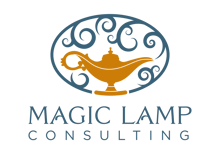A Community Needs Assessment (CNA) is a systematic process of gathering and analyzing data about...
Conducting a Community Needs Assessment That Drives Strategic Program Growth

Nonprofits exist to meet real needs—but those needs evolve. What worked five years ago may not resonate today. That’s why conducting a Community Needs Assessment (CNA) is one of the most important tools for nonprofits seeking to grow strategically, stay relevant, and deliver deeper impact.
A well-executed needs assessment helps you listen to the people you serve, gather valuable data, and align your programs with the most pressing issues in your community. More than a box to check for funders, it’s a strategic asset that can inform program design, improve funding success, and strengthen stakeholder trust.
Here’s a step-by-step guide to conducting a CNA that doesn't just collect information—but leads to clear, actionable growth strategies.
1. Define the Purpose and Scope
Believe a great place to start is with strategy, not surveys. Before collecting data, get clear on why you’re doing this and what you hope to learn. Are you evaluating your current programs? Exploring new service areas? Seeking input for a strategic plan?
Your purpose will determine the scope and methods. A targeted CNA can be just as valuable as a large-scale one—especially if it leads to specific, mission-aligned decisions.
Examples of CNA goals:
- Understand unmet needs among youth in a certain zip code
- Assess community awareness of your existing services
- Explore gaps in mental health resources for a specific demographic
2. Identify and Engage Stakeholders Early
Your community isn’t just your clients—it includes staff, volunteers, funders, partners, and other organizations doing similar work. Involve stakeholders early to shape the questions, methods, and priorities.
Create a Community Advisory Group or invite a few trusted voices to guide your process. This builds trust and ensures the assessment reflects real experiences—not just assumptions.
Example: One organization we supported included high school students on their CNA team. Their insights led to a shift in how youth programs were structured and delivered.
3. Use Mixed Methods for Richer Data
Don’t limit yourself to just numbers or just stories. A mix of methods helps you capture the full picture:
- Surveys: Efficient for reaching larger groups. Use online platforms like Google Forms or SurveyMonkey.
- Focus Groups: Great for understanding deeper experiences and building dialogue.
- Interviews: Ideal for engaging key stakeholders or clients with lived experience.
- Community Mapping: Helps identify geographic or demographic service gaps.
- Existing Data Review: Census data, school reports, public health stats, etc.
Tip: Keep surveys short and mobile-friendly. Incentivize participation with gift cards, snacks, or raffle entries.
4. Ask the Right Questions
Your questions should reflect the kind of decisions you hope to make. Avoid jargon, double-barreled questions, or overly abstract language. Instead, focus on clarity, accessibility, and relevance to your mission.
Sample survey questions:
- What challenges are you or your family currently facing?
- Which services have you used in the past year?
- Are there services you need but can’t access? Why?
- How do you prefer to receive support (in-person, virtual, group, one-on-one)?
Don’t forget to ask what’s working—this helps validate your strengths and inform your communications.
5. Analyze and Share the Results
Once your data is collected, take time to analyze and organize it by themes. Look for patterns in needs, barriers, preferences, and opportunities.
Create a clear, digestible Needs Assessment Report with:
- Key findings and quotes
- Data visuals (charts, graphs)
- Clear implications for programs or strategy
- A summary of who was engaged and how
Then—share it. Post highlights on your website, present findings at a community forum, and send updates to participants and stakeholders. Sharing your findings shows you’re listening and acting on feedback.
6. Turn Findings Into Action
Let the data guide—not dictate—your strategy.
The goal isn’t to change everything overnight. Instead, identify a few priority opportunities and connect them to what your organization does best. Consider:
- Program pivots or enhancements
- New partnerships to meet emerging needs
- Improved outreach based on awareness gaps
- Funding proposals aligned with real-time community data
Example: A food justice nonprofit used its CNA to uncover transportation as a major barrier to access. The result? A successful grant application for a mobile pantry truck.
Create a simple action plan with short-, mid-, and long-term goals tied to your findings.
7. Repeat and Refine Over Time
The community’s needs change—and so should your approach to assessing them. Integrate regular feedback loops into your ongoing operations:
- Add short surveys to program evaluations
- Host listening sessions annually
- Track trends across program data over time
Even informal data can help you stay agile and relevant.
Our Final Thoughts
A community needs assessment isn’t just about gathering input—it’s about aligning your mission with the real needs of the people you serve. When done well, it can drive strategic growth, foster collaboration, and build trust with funders and stakeholders alike.
At Magic Lamp Consulting, we help nonprofits design and conduct CNAs that inform action, not just reporting. If you're ready to make data work for your mission, we’d love to help guide the process—from stakeholder engagement to strategic implementation.
Let your community’s voice be the compass for your next chapter.




